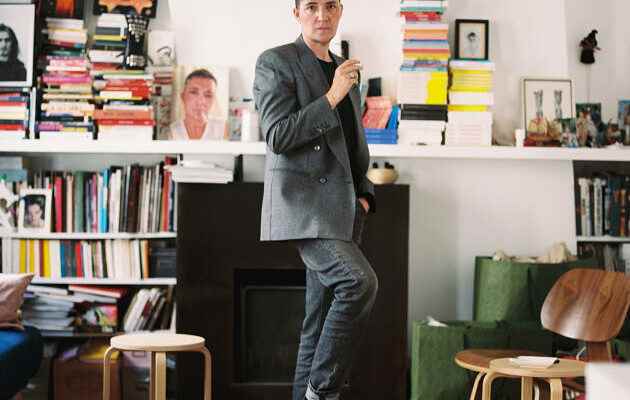It was one evening in July, in a bar in Ménilmontant, that we found Paul B. Preciado. Shirt and black pants, moccasins on his feet and his dog Rilke in his arms, the Spanish philosopher and essayist is passing through Paris, between two conferences and two planes. He has just completed his next book. Dysphoria Mundi, which will be published by Grasset this fall, fourteen years after the publication of Test Junkie (Grasset, 2008), in which he recounted his gender transition. “Assigned woman” at birth, he bore the first name of Beatriz before obtaining a change of marital status, in 2016.
Considered one of today’s most influential thinkers, Paul B. Preciado calls for debinarizing sexuality, decolonizing the unconscious and deconstructing the patriarchal order. He places the body at the center of his analysis, so it is naturally that he is interested in fashion, a discipline that he sheds a new and radical light on, like all the subjects he touches. The one who dreams of living An apartment on Uranus (Grasset, 2019), far from the Earth, opens spaces, elsewhere, outside established patterns.
“Fashion is to the body what architecture is to space: a technology of fabrication and social control. Paul B. Preciado
” The garment is a synthetic skin, a prosthesis which participates in the social and political construction of the difference of sex, but also of class, race and age. Fashion is to the body what architecture is to space: a technology of fabrication and social control. » It cannot therefore, according to him, be reduced to simple considerations of style which would exempt it from its responsibilities in economic, gender and sexuality policies.
Born in 1970 in Burgos, a Catholic city in northern Spain at the time of Franco, the philosopher experimented from childhood with the segmentation of gender linked to clothing. Her father owns a garage, her mother is a seamstress. ” She worked for a wedding dress workshop in a specially arranged room in the house. During the fittings, I watched young girls turn into princesses. It was a very dreamlike and theatrical universe, with a hyperbolic vision of femininity. I grew up in a very gendered and very conservative world. My mother absolutely wanted to dress me as a girl despite my reluctance. » Her parents enrolled her in a single-sex school run by nuns. ” The uniform was very feminine, but I always had pants in my backpack. As soon as I left school, I slipped my skirt into my pants. »
You have 64.51% of this article left to read. The following is for subscribers only.
